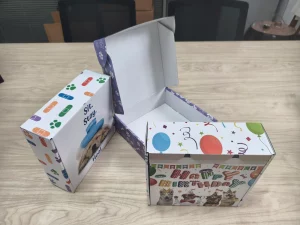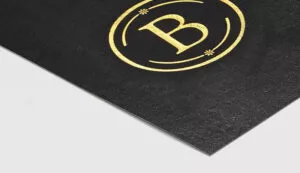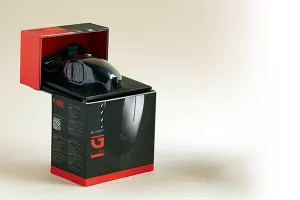I often feel uncertain about how my packages look when they arrive. I wonder if plain boxes fail to impress my customers. I want a solution that protects my products but also elevates my brand. That’s why custom shipping boxes catch my eye.
Custom shipping boxes add unique branding, better protection, and a memorable unboxing experience. They help businesses stand out while keeping items safe during transit.

Finding the right shipping box can be the difference between a forgettable delivery and a delighted customer. Let’s explore what a shipping box is, see if custom designs are worthwhile, and find out if major carriers like USPS accept them.
What is a shipping box?
I sometimes worry that a simple cardboard box won’t effectively protect my goods in transit. A shipping box is designed to do more than just hold items. It needs to withstand the rigors of shipping while still representing my brand identity.
A shipping box is a sturdy container made from cardboard or corrugated material, used to protect products during transit. It often includes flaps, adhesive, or tape for secure closure.

A shipping box can be made from various materials, but the most common is corrugated cardboard. Corrugated cardboard has a fluted middle layer sandwiched between two flat layers, giving it strength and cushioning. This design helps absorb shocks, protecting fragile or sensitive products from damage. The thickness of the corrugation can vary depending on the weight and fragility of the item being shipped. Some shipping boxes have multiple corrugated layers for extra support, which is especially important for heavy or breakable products.
When I choose a shipping box, I look for something that can not only hold the item but also handle external pressure. Boxes often stack in warehouses or delivery trucks, so I need a box that won’t easily collapse. Most shipping boxes have flaps that fold over the top and bottom. These flaps are sealed with tape or glue, ensuring the contents remain stable. This method of closure also prevents items from slipping out if handled roughly.
Some boxes include special inserts or dividers to keep multiple items separated. This organization protects each product from bumping into others, which is important for shipping sets of glassware, electronics, or anything susceptible to dents or cracks. The design of the box can vary, but the common thread is strength and uniformity.
Shipping boxes also serve a crucial logistical function. They often have space for labels and barcodes, making it straightforward for shipping carriers to identify and track packages. Many businesses will print these boxes with instructions like “Fragile,” “This Side Up,” or “Handle with Care,” which helps keep the items safe from potential mishandling. Some boxes have a single color, such as the traditional brown cardboard look, while others incorporate bright designs.
The size of a shipping box matters. I try to pick a box that’s just big enough for the product and any protective material, such as packing peanuts or bubble wrap. If the box is too big, the item might move around, increasing the risk of damage. If it’s too small, it may require excessive force to close, which could compromise the box’s structural integrity. An optimal fit reduces the amount of filler needed, cutting shipping costs and lowering my environmental impact.
A shipping box also plays a role in brand perception. Plain boxes are functional but don’t stand out. On the other hand, a well-designed shipping box can convey quality, professionalism, or even luxury. The box can become an extension of my brand story, turning a mundane shipping container into a marketing opportunity. When the customer sees the box with my logo, I establish consistency and build brand recognition. Plus, an appealing box may spark excitement before the customer even sees the product.
Overall, a shipping box is essential for physical product distribution. It must be durable, sized appropriately, and easily sealed. Although the baseline function is to protect goods, many brands leverage shipping boxes for messaging and brand reinforcement. The best shipping boxes balance functionality with design, ensuring a smooth journey from warehouse to doorstep. If done properly, the humble shipping box can lead to fewer returns, higher customer satisfaction, and a memorable brand impression.
Are custom shipping boxes worth it?
When I think about shipping costs and potential design fees, I question if custom boxes are worth the investment. Yet, my brand’s reputation hinges on every detail. I see potential in the branding power of unique packaging.
Custom shipping boxes offer more than just protection. They provide brand visibility, boost unboxing experiences, and can lead to stronger customer loyalty, making them a worthwhile investment.

Custom shipping boxes transform a routine package into a memorable brand touchpoint. I want customers to experience a sense of excitement when they receive my products. Generic boxes are functional, but they lack the personal touch that sets a business apart. By opting for custom designs, I can reinforce my brand identity with colors, logos, or even taglines on the packaging. This consistency builds recognition, especially if customers reorder often.
A major benefit of индивидуальные транспортные коробки1 is the unboxing experience. People often share these moments on social media or in word-of-mouth recommendations, especially if the packaging is distinctive. I’ve seen many subscription services rely heavily on customized boxes to differentiate themselves. They might have playful text on the inside flaps or incorporate brand-specific illustrations. This approach can spark positive emotions, encouraging repeat purchases and brand advocacy.
I also consider the practicality side. A custom box designed to fit my product’s dimensions can reduce the need for extra packaging materials, such as bubble wrap or void fill. By minimizing empty space, I lower shipping weights and costs while cutting down on potential movement during transit. This optimization means fewer damages, which leads to fewer returns and happier customers.
Custom shipping boxes can also show a commitment to sustainability. Many printing and manufacturing processes offer eco-friendly materials, like recycled cardboard or soy-based inks. This choice resonates with a growing consumer base that values environmentally responsible packaging. If I communicate the eco-friendly aspect clearly, I build trust among consumers who prioritize green practices.
Yet, cost is a legitimate concern. Custom printing or specialized materials increase initial expenses compared to plain bulk boxes. However, the return on investment can come from improved brand loyalty, reduced damage claims, and even social media exposure from happy customers. When people see eye-catching boxes on their doorstep, they often appreciate the extra effort. If the design impresses them enough, they might become brand ambassadors without additional prompting.
Custom shipping boxes also simplify warehouse management. Sticking to standard sizes is good for plain packaging, but if my product has a unique shape, it’s more efficient to have boxes made for that item. This way, I don’t waste filler or risk shipping goods in oversized boxes that rattle around. Over time, these small efficiencies can add up, balancing out the higher cost of customized boxes.
In short, custom shipping boxes serve multiple roles: brand reinforcement, product protection, customer experience enhancement, and even cost savings in some scenarios. They allow me to elevate my brand story and stand out in a competitive e-commerce space. For many businesses, especially those that rely on e-commerce or subscription models, the investment in custom shipping boxes is justified by the benefits gained in marketing, consumer satisfaction, and operational efficiency.
Does USPS take custom boxes?
I sometimes wonder if using customized boxes could cause problems at the post office. Are carriers okay with non-standard designs, or do they require strictly plain packaging?
Yes, USPS accepts custom boxes as long as they meet size and weight guidelines. Proper labeling and postage are crucial, but personal branding is generally welcomed.

Many people think mailing something in a custom box might complicate shipping through the United States Postal Service (USPS). However, USPS doesn’t forbid using unique designs or printing on boxes. As long as the package meets the guidelines for dimensions, weight, and labeling, it should go through their network without trouble. I focus on ensuring the addresses, barcodes, and postage are clearly visible. Some businesses even get recognized because their packaging stands out, making it easier to locate or handle.
In my experience, USPS has standard size limits for different shipping tiers. For instance, if you’re using Priority Mail, the sum of length and girth cannot exceed a certain measurement. For heavier items or large packages, you might need to consider Priority Mail Flat Rate options2 or other services. As long as the индивидуальная коробка dimensions fit the chosen shipping class, USPS will accept it. If I try to mail something oversized, I might face surcharges or have to switch to another service tier.
Printing or branding doesn’t conflict with USPS rules. I just need to ensure barcodes and shipping labels remain unobstructed. If my artwork covers where the label needs to go, carriers could struggle with scanning, which might cause delays. Printing can incorporate a special area of plain space for addressing or barcodes. Some businesses choose to leave a white area for the shipping label or use color schemes that don’t interfere with scanning. This approach keeps the design visible while staying postal-friendly.
I also pay attention to how the box’s edges are sealed. USPS typically expects that flaps are closed securely so items won’t fall out. Sometimes, interlocking mailer boxes don’t need extra tape, but if the product is heavy or the journey is long, a bit of tape can offer peace of mind. If I’m shipping something fragile, I include stickers or markers like “Fragile” on the box. Though not guaranteed to prevent mishandling, it can alert postal workers to be more careful.
Lastly, keep in mind that USPS offers free packaging for certain services, like their Priority Mail boxes. However, these can’t be customized with external branding. If I want a personalized look, I can’t use the free boxes for shipping unless I pay for custom overlays or sleeves, and that might not be as straightforward. Thus, many e-commerce businesses prefer their own custom packaging, especially if brand consistency matters.
Overall, USPS will happily ship индивидуальные коробки that meet the standard guidelines. My main priority is verifying the box dimensions, ensuring correct labeling, and sealing it in a way that upholds USPS standards. That means my brand’s personality can shine without worrying about compatibility or compliance issues.
[watch video]https://lumen5.com/user/peterandharley6/transform-your-packa-voish/
Заключение
Custom shipping boxes can transform the mundane act of shipping into a branded experience. They are worth considering for businesses that want to impress customers, reduce damages, and enhance their brand identity.








